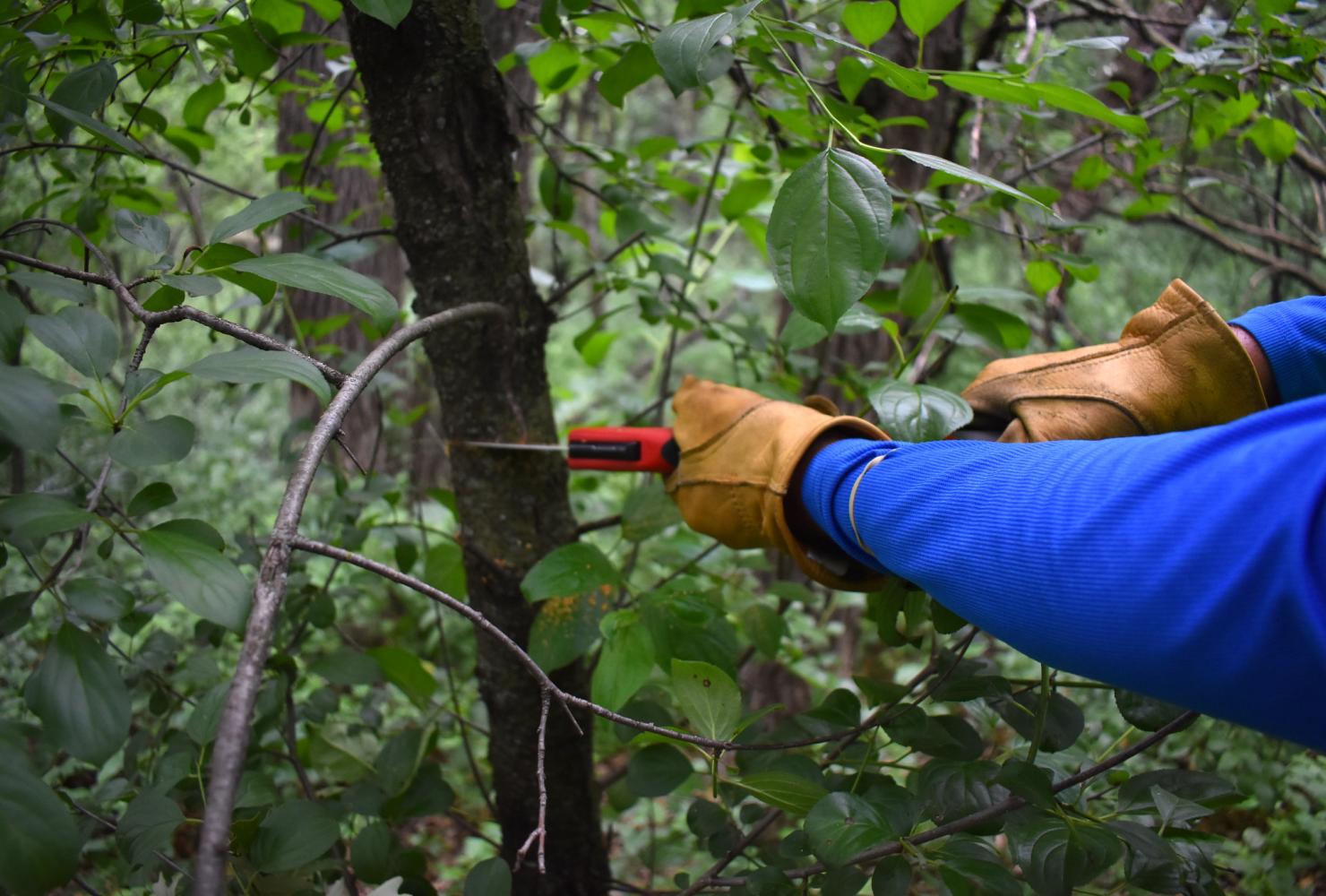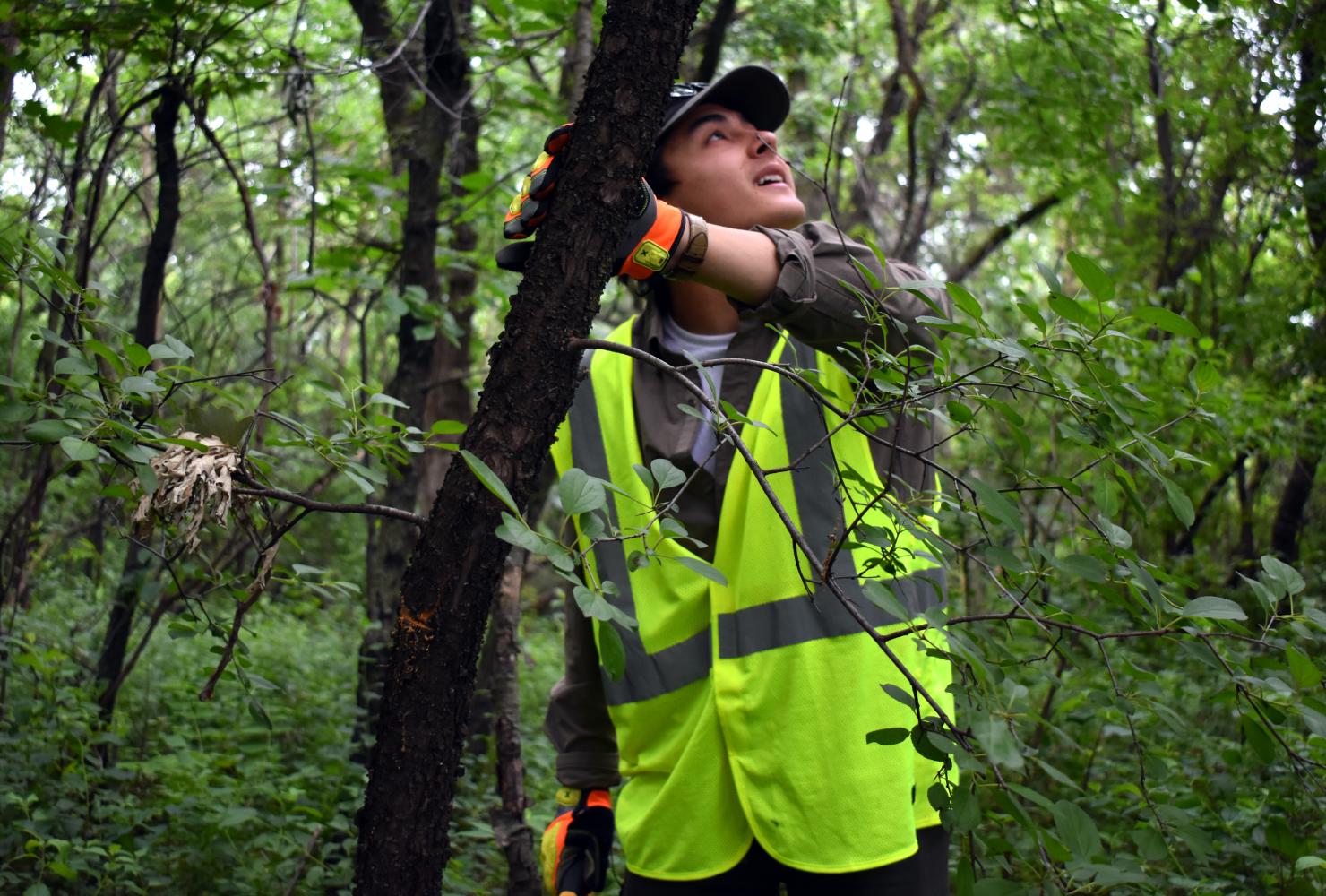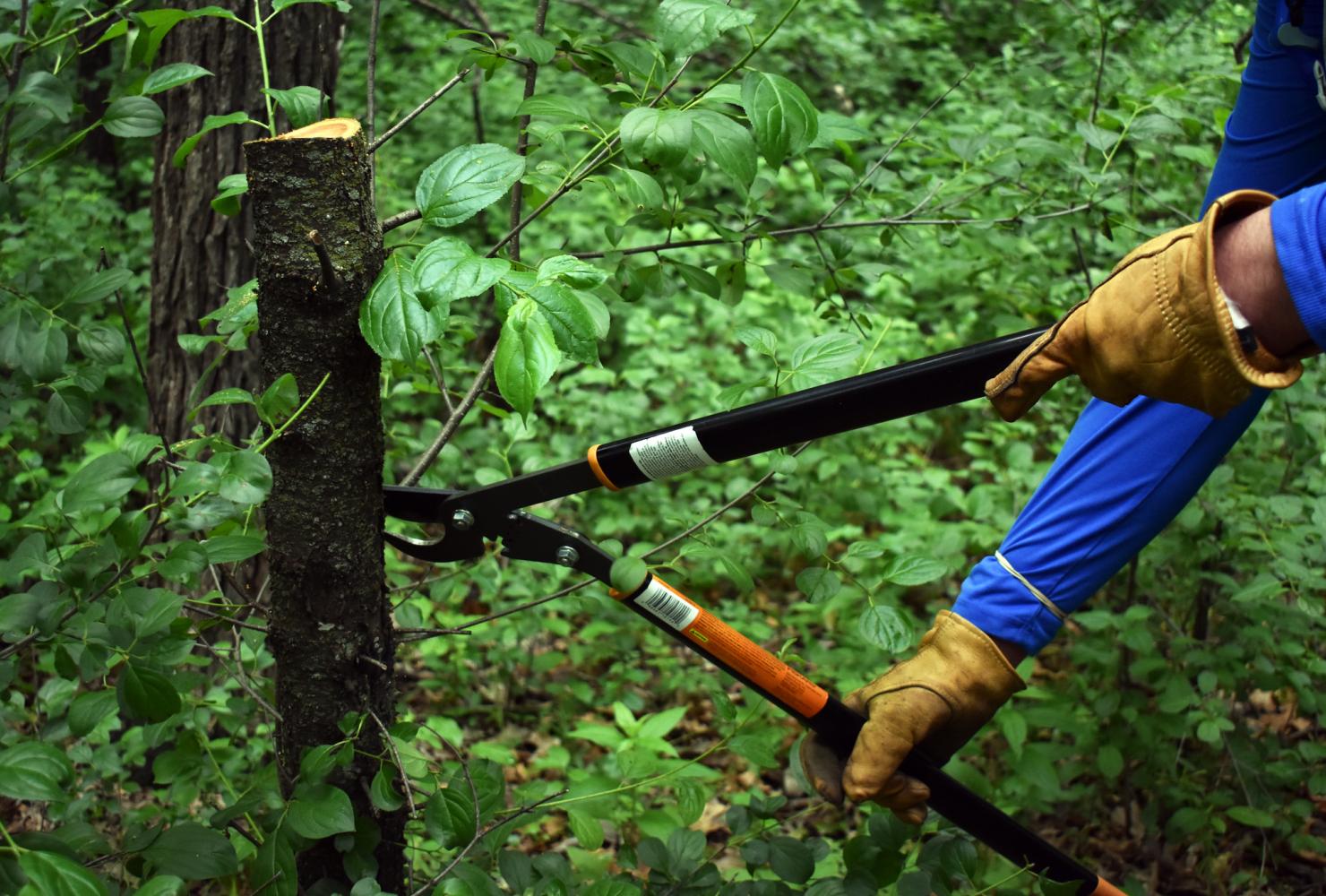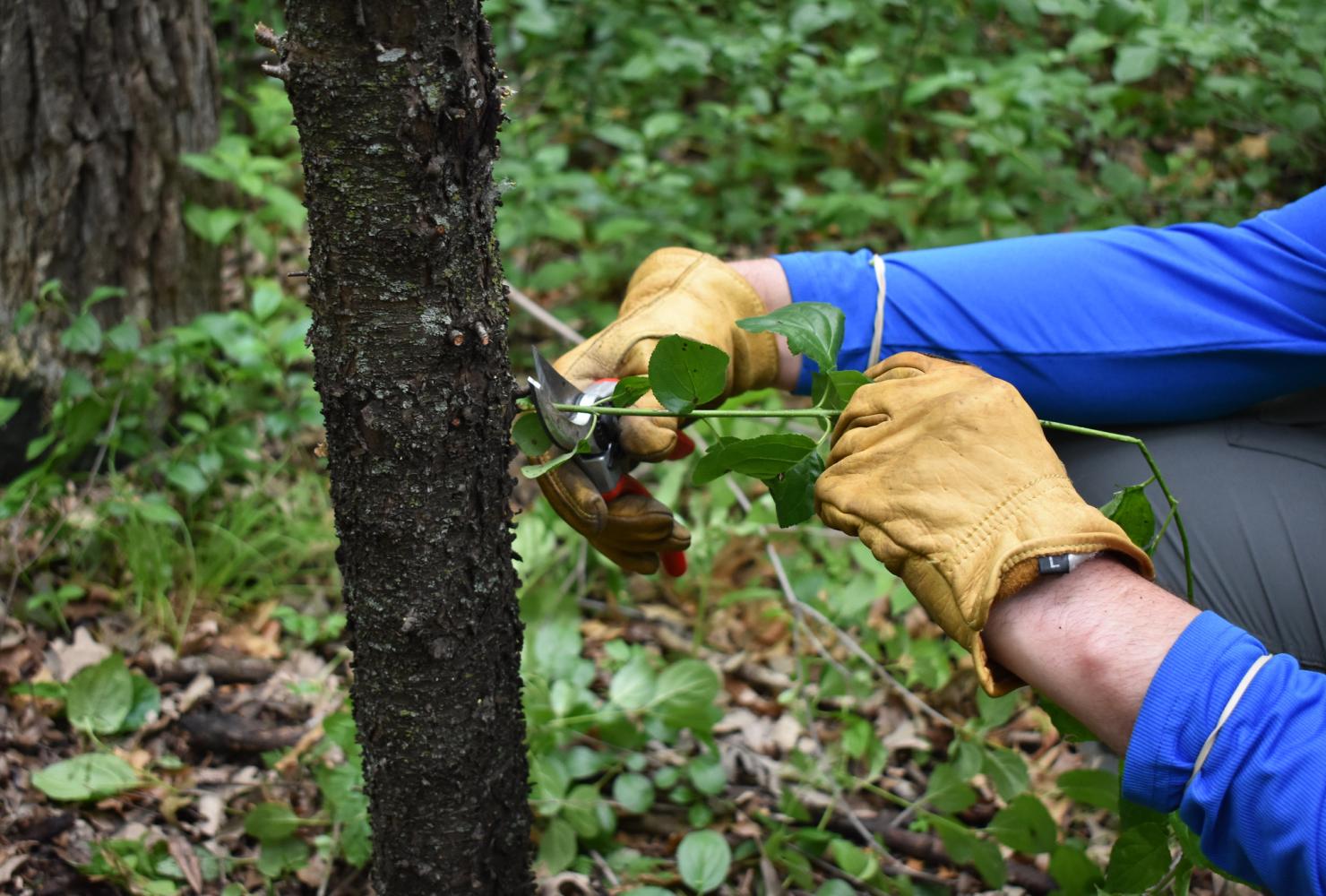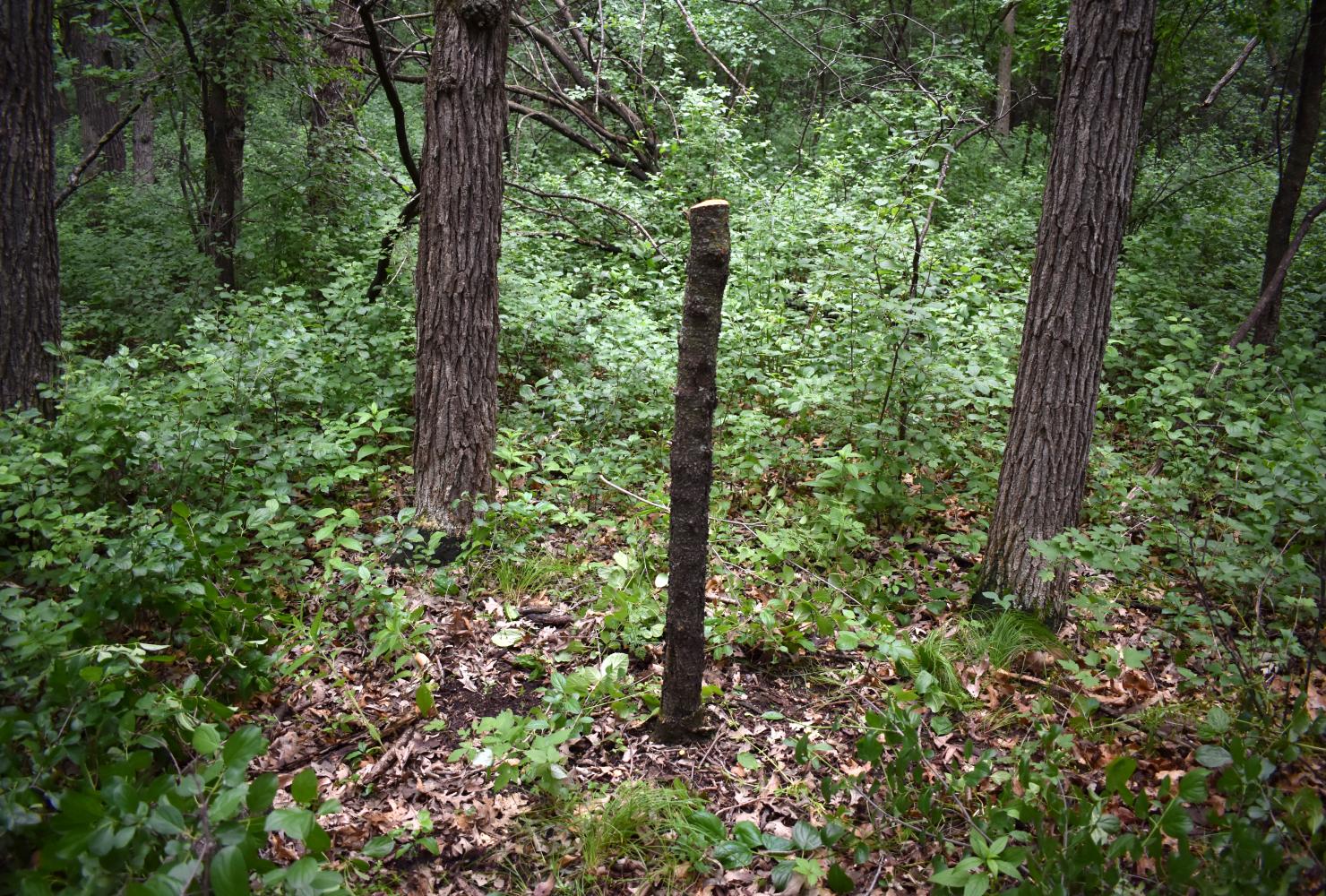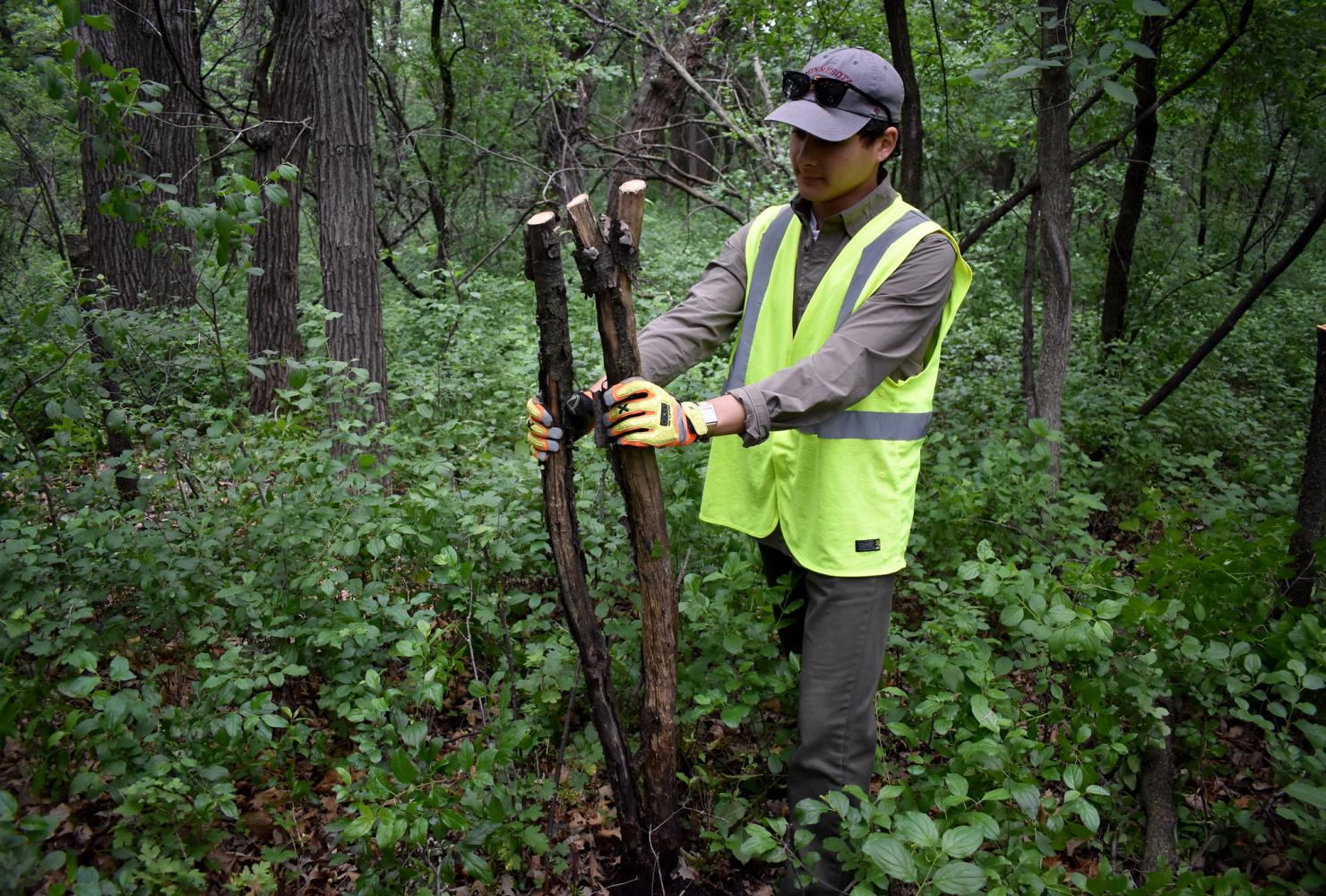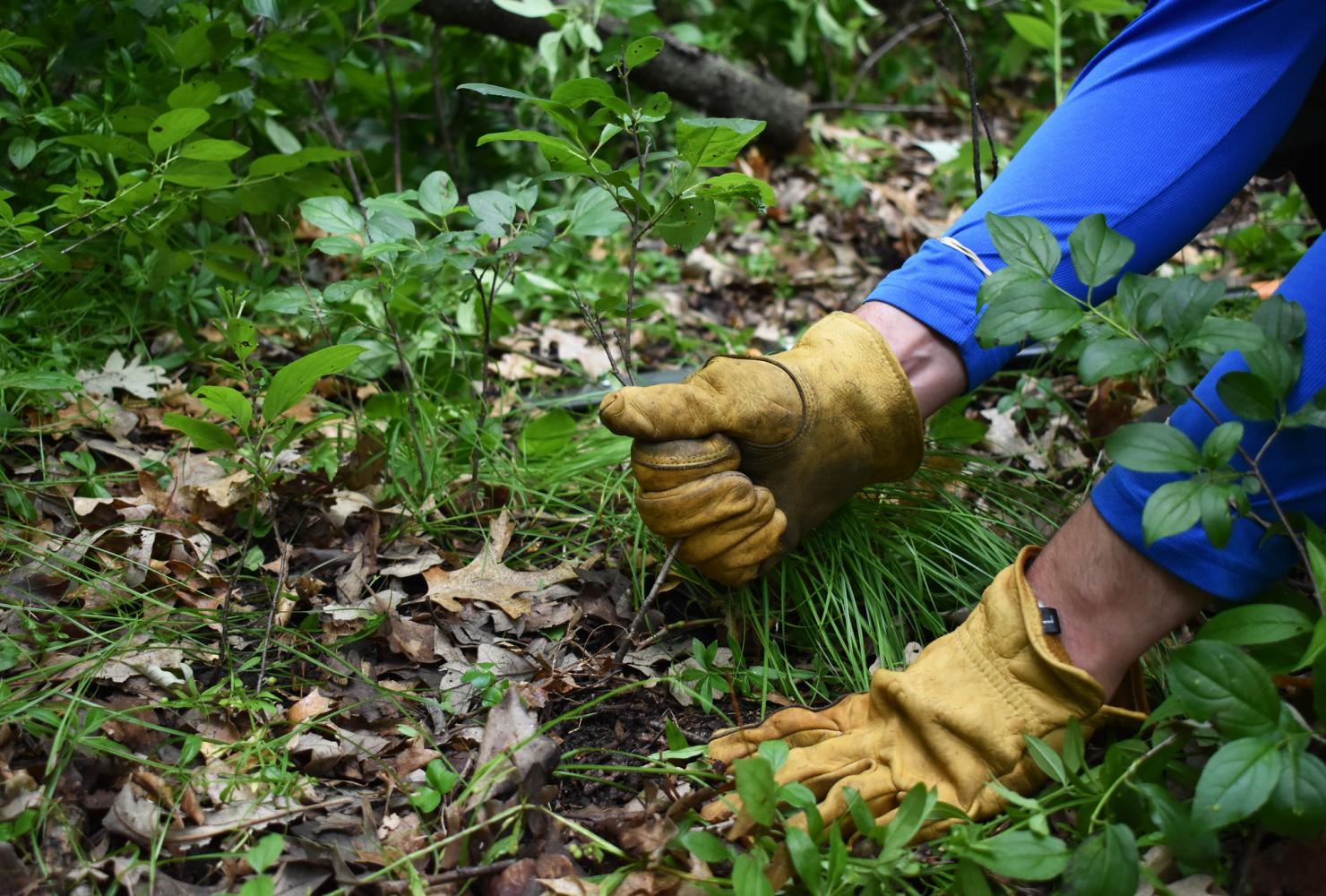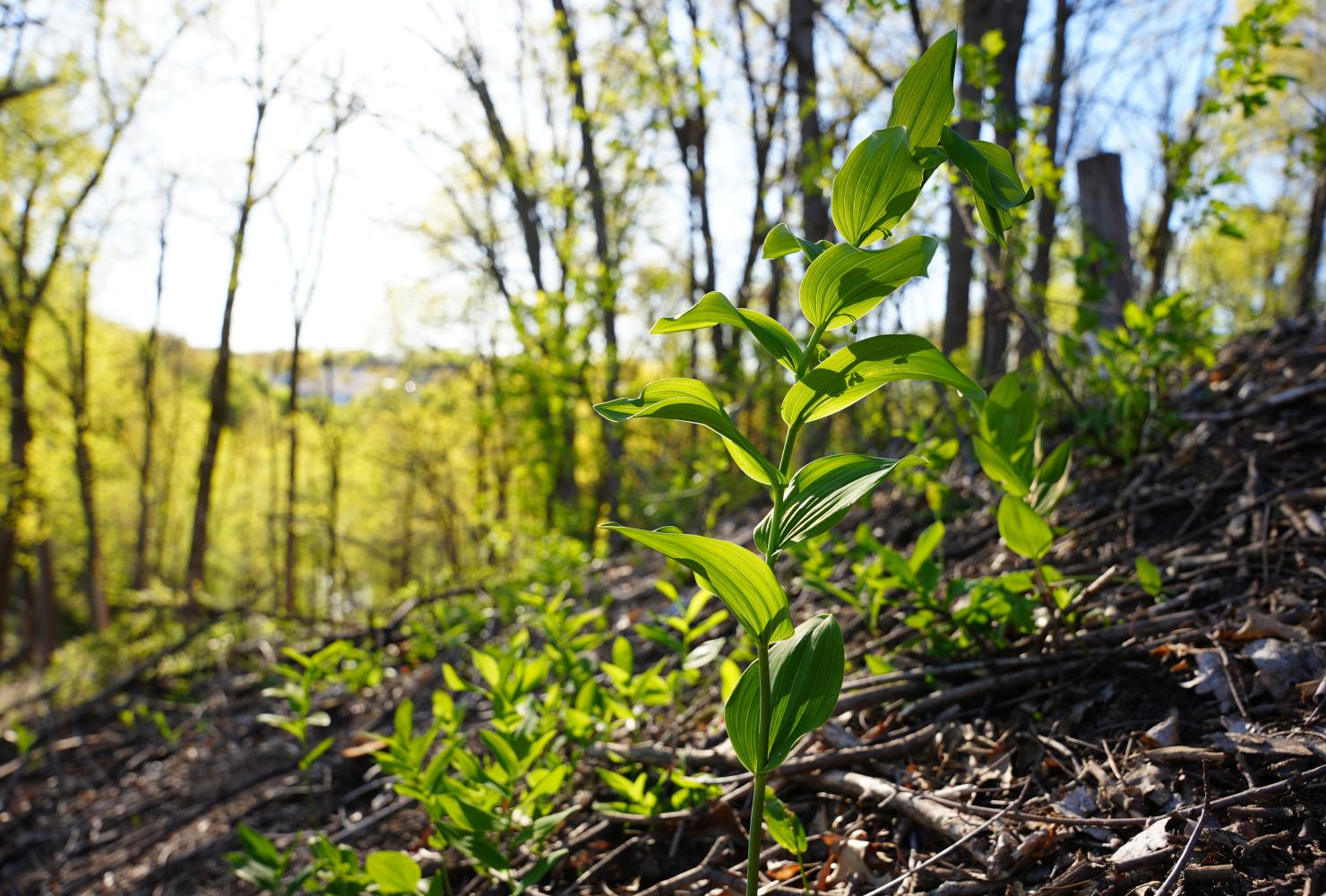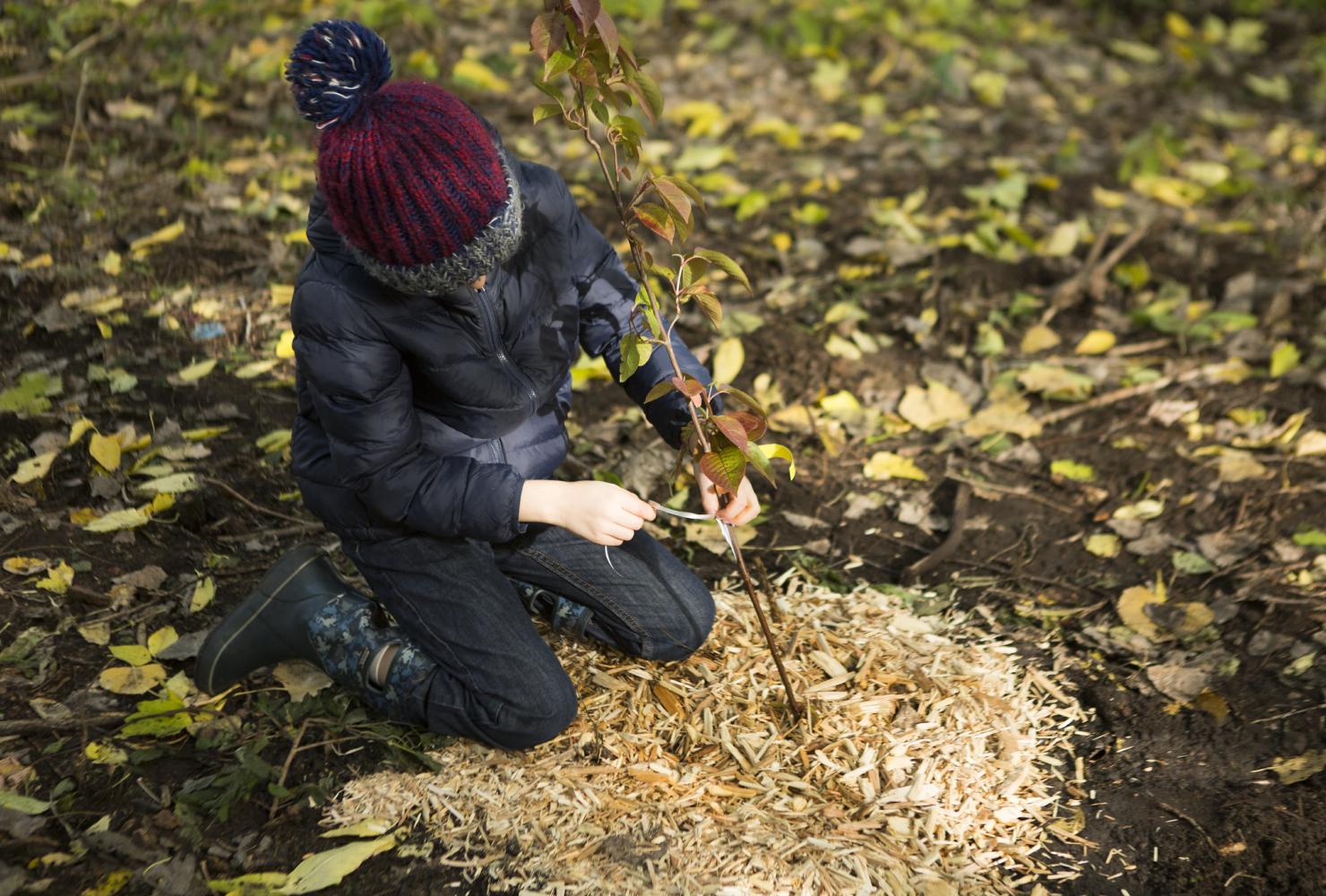How (and when) to use the critical period cutting method to remove invasive buckthorn
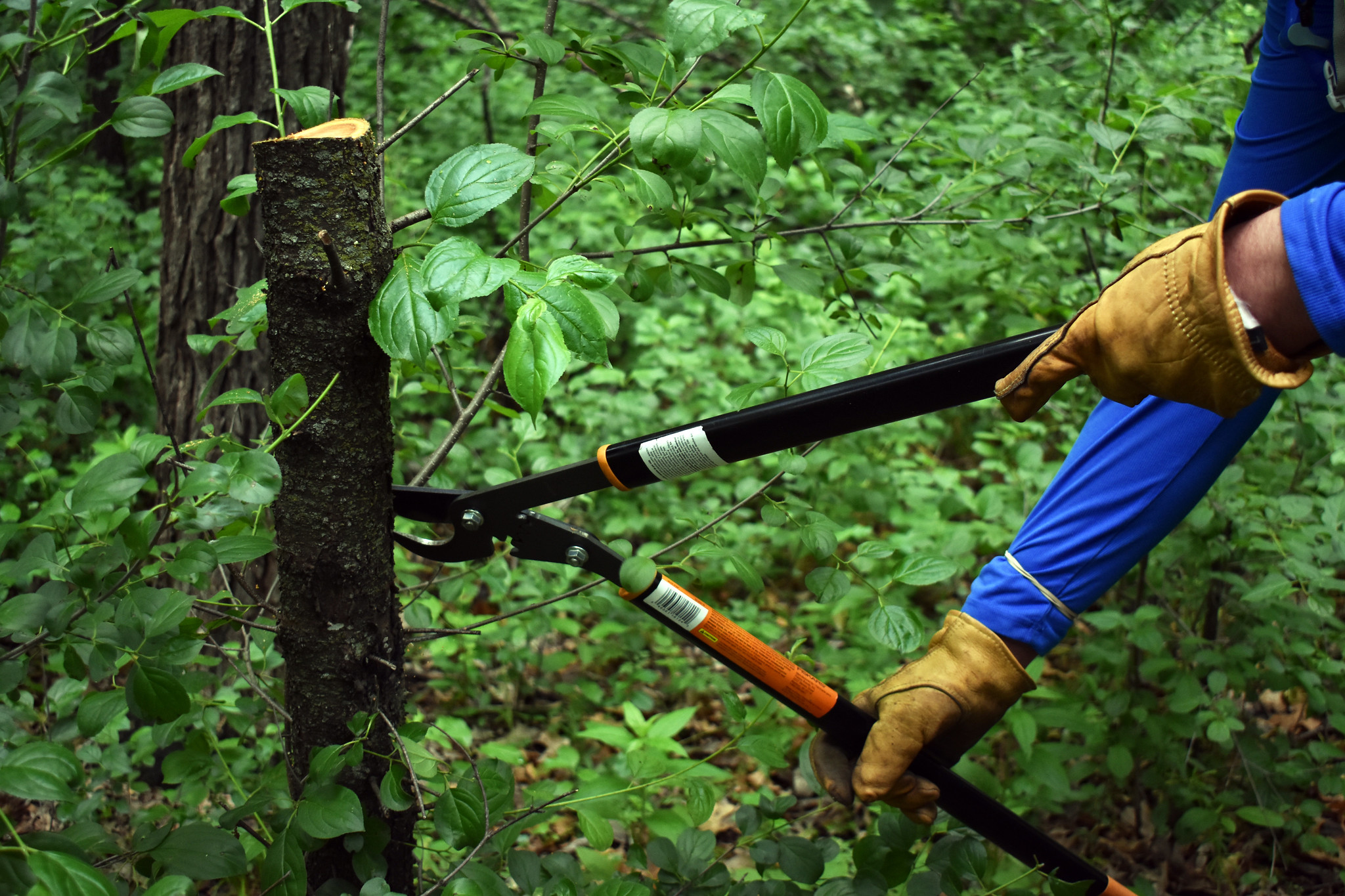
The critical period cutting method uses what we know about how buckthorn grows to help us remove it.
Since 2019, FMR has been experimenting with critical period cutting, a new, herbicide-free method of removing large buckthorn. We've continued to hone the technique, and other groups are putting their own creative spins on it. In 2024, Minnesota Conservation Volunteer magazine even featured the method in an article about emerging buckthorn control strategies.
But how exactly do you do critical period cutting? We've received so many questions about the critical period cutting method that we created this more in-depth how-to guide for homeowners and land managers.
Why we remove buckthorn
If you're reading this, you're probably already familiar with buckthorn and the reasons why we work to remove it from forests and natural areas. Introduced into the U.S. in the early 1800s during European colonization, buckthorn has become the dominant shrub in many Minnesota forests. It quickly outcompetes native vegetation that has co-evolved to support our native pollinators. Its spread has harmful effects on soils, water quality and wildlife.
Removing buckthorn can help diversify the plant community, reduce erosion and improve habitat. But it can be a daunting task for homeowners and land managers. If you're considering critical period cutting, we've outlined step-by-step instructions below.
Guide to critical period cutting for buckthorn removal
Use this method when:
- You’re trying to remove buckthorn with stems greater than 2” in diameter (we've had success with the method on smaller stems, but it can be trickier to carry out)
- You're working on a small natural area or a home landscape
- You don't want to or can't use herbicides
- You can commit to following up consistently for multiple years
Tools you'll need:
- Work gloves
- A saw (bowsaw, handsaw, chainsaw, etc.)
- Loppers or hand pruners
- Eye protection (recommended)
Instructions:
1) Cut and strip the main stem (year 1, late May or early June*)
Cut through the buckthorn's main stem 3-5 feet above the ground, then cut off any side branches or additional growth on the remaining stem. The goal in this first step is to remove a buckthorn plant's entire "canopy," which works best once buckthorn has fully leafed out and expended its stored energy reserves to create new growth. Without leaves, the buckthorn plant cannot photosynthesize — its only method to replenish those stored nutrients. You'll want to use a saw for the main stem, but you may be able to strip side branches with loppers or pruners.
2) Re-strip the stump until it's bare (year 1, mid-September*)
Cut off, or "re-strip," any branches and new growth from the tall stump using loppers or hand pruners. Cut as close to the main stem as possible. Since you're leaving the main stem intact, this step is better described as re-stripping than re-cutting or applying a second cut. Re-stripping stresses the plant by continuing to exhaust its root reserves and preventing it from drawing down any additional nutrients it may have gained in its leaves throughout the summer.
3) Re-strip the stump again (year 2, late May or early June*)
Repeat the re-stripping process after the initial leaf-out in the spring, using loppers and pruners to remove all new growth and anything you missed the previous fall. The goal is to leave a bare main stem. This repeated stressing of the plant, combined with a lack of stored energy from the previous year, brings about the decline of the buckthorn. Depending on site conditions like soil nutrients and light availability, the stem may already be dead.
4) Re-strip the stump one more time (year 2, early to mid-September*)
Do one final re-strip before leaf-drop in the fall. This round should fully exhaust any stored energy reserves and will put an end to the plant without the use of herbicides.
5) Remove the stump (year 2, early to mid-September*)
Buckthorn is relatively shallow-rooted, so in most cases, you can just push the stump over. Try not to disturb the soil too much; tamp down soil and leaf litter to prevent exposed soil, which can give way to erosion and new weedy species. If the plant is not yet dead, continue the re-stripping process over the following growing season.
6) Seed and plant native species (year 2)
Removing buckthorn is only half the journey toward restored habitat. Seeding and planting native species restores wildlife resources and provides competition for new buckthorn seedlings. You can plant new shrubs in the spring or fall of the second year. If you're planning to seed new plants, wait until the late fall of the second year. Great woody native replacement plants for buckthorn in forested areas include: highbush cranberry, nannyberry, chokecherry, gray dogwood, pagoda dogwood, American hazelnut and serviceberry.
See research and more recommendations for seeding and planting from FMR's partners at the University of Minnesota.
7) Pull nearby buckthorn seedlings and young growth + tend new plantings each year (ongoing)
The big buckthorn plant you removed could have created hundreds of seeds through prior years' berries. Those seedlings will probably continue to come up for a few growing seasons. To deal with this new growth each season, pull up the small buckthorn plants and their roots by hand. Replace any soil that gets disturbed in the process. Make sure to water and tend to any new plantings.
*Note: You can also start this process with step 1 in mid-September, then step 2 in late May or early June and so on, flipping the spring and fall tasks.
What to do with cut buckthorn stems and branches
After each step, you can dispose of cut stems and branches in a few ways. Homeowners can usually put buckthorn into municipal yard waste. You can also use buckthorn as firewood. If removing the wood is difficult, you can pile or scatter the cut material to decay onsite. In fact, structured brush piles can actually create habitat for wildlife. Whatever removal method you choose, just ensure that any berries on the cut buckthorn are contained so you don't spread the seeds.
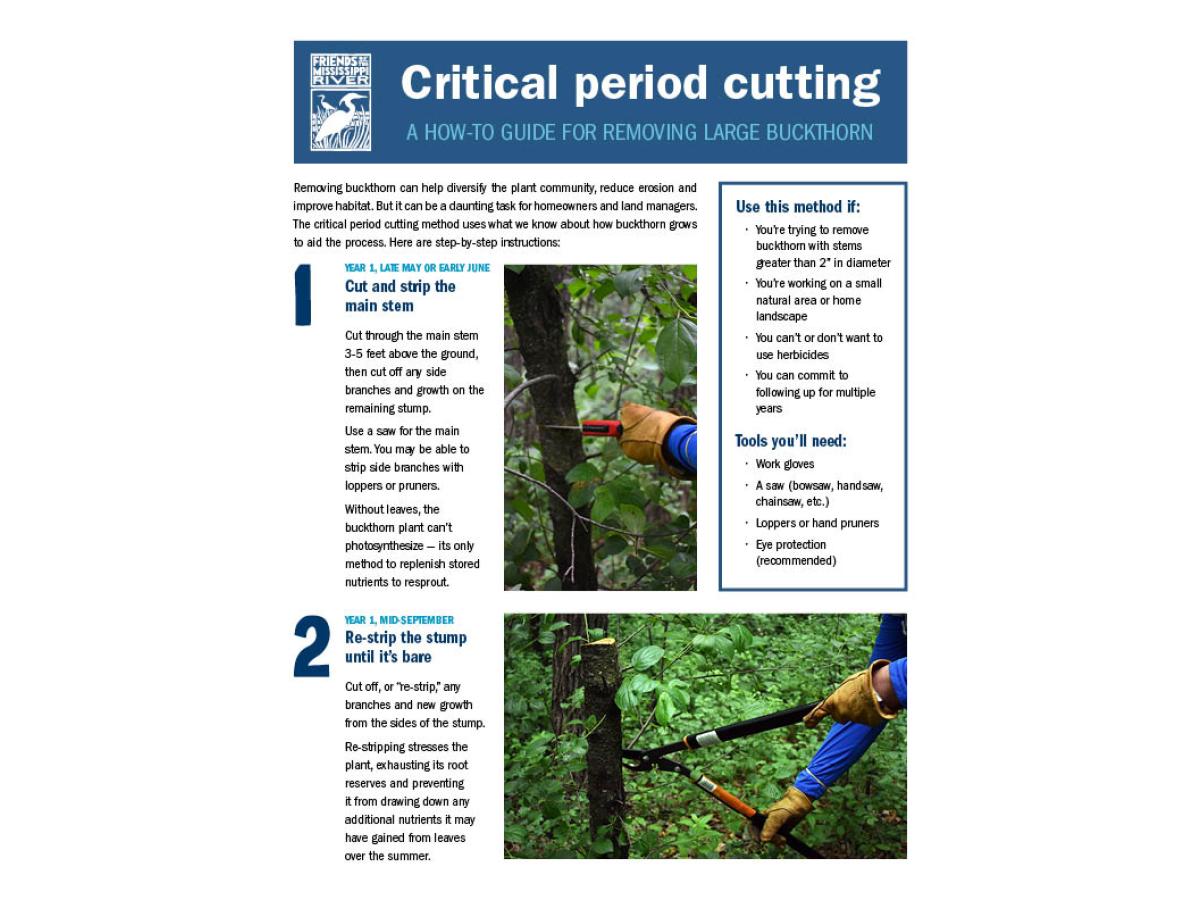
Download the printable guide
Choosing the right buckthorn control method
We've chosen to use critical period cutting at FMR restoration sites Mississippi Gorge Regional Park, Crosby Farm Park and Bassett Creek Park because volunteers can implement it, and it reduces herbicide use. We highly recommend it for managing large buckthorn in small natural areas or home landscapes. (As with any method, consistency is key. Once cut, you need to control buckthorn regrowth over time.)
But critical period cutting is just one tool in the buckthorn management toolbox.
We need multiple methods to address the challenge buckthorn presents. For small sites with large buckthorn, you can consider cutting to the base and treating the stump with an appropriate herbicide or completely covering the stump with a Buckthorn Baggie to prevent re-sprouting.
"Buckthorn Baggies" are a modern take on the old coffee can method of controlling shrubs and trees. Once cut, zip-tie a black plastic bag over the stump. Blocking sunlight from the buckthorn prevents the stem from re-sprouting and eventually kills the plant. However, this method works best for medium-sized, single-stemmed buckthorn. And if you don't check and tend the bags, they can become damaged or fall off, creating plastic litter and allowing the stump to re-sprout.
Another common approach is to use a weed wrench to pull up buckthorn by the root. But weed wrenches can only pull small shrubs. And if not used carefully, wrenching can result in soil erosion, especially on slopes and near waterways.
FMR also conducts restoration projects covering hundreds of acres. Due to their scale, many projects involve other buckthorn management techniques like forestry mowing or follow-up control using goats. Those methods allow us to work on larger areas efficiently. While FMR is participating in research about the feasibility and cost of scaling up critical cutting, for now, it's a tool best applied on smaller scales.
Dig in with us!
Steward the places you love for a cleaner river and better habitat at dozens of sites across the metro.
